Top dressing is one of those lawn treatments normally undertaken by more serious lawnsmiths. The ones who won’t accept anything less than perfection.
It’s also carried out by greenkeepers who look after bowling greens and golf courses.
If you’re not particularly green-fingered and you wouldn’t consider your lawn to be your pride and joy, then top dressing probably isn’t for you (unless you’re renovating your lawn in autumn). It’s hard work and can be expensive.
However, if you love your lawn and you’re in the pursuit of perfection, read on.
What is Lawn Top Dressing and Why Should I Do it?
Top dressing is the process of spreading additional soil over the surface of your lawn. This would normally be a loam or a loam and sand mix, depending on the condition of your current soil.
Understand that the material you add to the surface of the lawn will eventually become part of the root zone. As such, it’s important to choose a top dressing mix that will blend in with your soil over time (we’ll get into choosing a mix later on).
4 Big Benefits of Top Dressing
Top dressing your lawn has several benefits;
Helps to Create a Smooth Surface
If you have any undulations or low spots in your lawn, top-dressing can help to smooth them out.
Don’t expect it to repair big divots or hollows in your lawn though. If your lawnmower bumps and bangs through low spots while cutting the grass you should remove the turf, add additional material (or remove it) to the soil and then re-lay the sod.
Helps in Controlling Lawn Thatch
When you top dress a lawn with good a high-quality mix, you introduce micro-organisms back into the soil. These help in the decomposition of organic material like dead grass roots, old clippings and other matter that causes lawn thatch to build up.
Improves the Soil Structure
Repeated applications of a sandy, loamy top dressing mixture to a heavy soil will improve the soil structure over time. Especially after hollow-tine aeration.
This will help to add nutrients back into the soil, improve drainage and reduce the chances of fungal infections like Lichens Red Thread, Pink Patch, Fusarium Patch and Snow Mould.
Likewise, adding a loam mix to a dry, sandy soil will help it to retain moisture. This in turn helps to break down nutrients and aid grass growth.
Improves Germination and Growth When Overseeding
Treatments like scarification and aeration are invasive so you should always spread new grass seed after to help the lawn recover.
The application of top dressing ensures the new grass seed has plenty of contact with fertile soil in which it can germinate and grow quickly.
How to Choose a Top Dressing Mix For Your Lawn
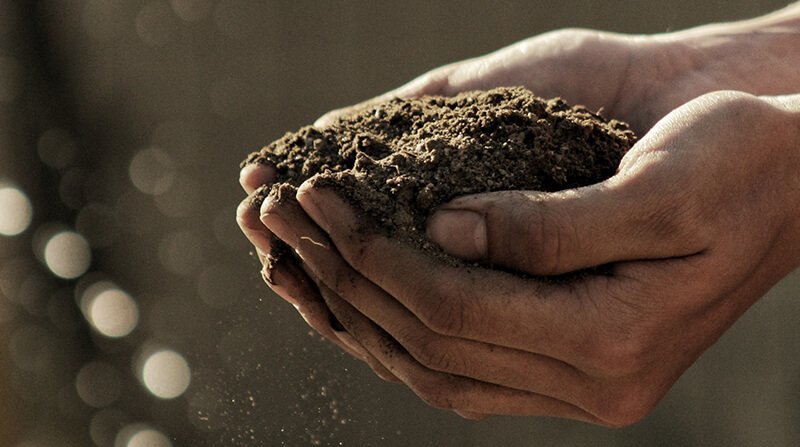
When it comes to choosing a soil blend for your garden, things can get very scientific. In other words, very, very confusing.
Golf courses spend millions of pounds every year on soil science and research. They know that soil can make the difference between a good playing surface and a sublime one.
Us, on the other hand?
We just want a nice lawn so we don’t need to be quite so geeky!
The good news is that choosing a top dressing mix is very simple.
Before you go out and buy a top dressing mix, remove a few cores of turf from your lawn and inspect the soil;
- If it’s heavy clay – Choose a sandy loam mix to help improve drainage.
- If it sandy – Use a loam mix, this will improve moisture retention.
- If it’s somewhere in the middle – Use a sandy loam mix and give it the best of both worlds.
Consider the pH of Your Soil
Ideally, you’d choose a soil that is as close to the pH of the soil on your lawn as possible, or, something that will improve it.
So test your soil with a soil testing kit first.
- No batteries needed, just insert the sensor probe into the soil about 2-4 inches
- Premium Double-needle Detection Technology strongly enhances the speed and accuracy
pH ranges from 1 (acidic) to 14 (alkaline). Grass likes soil to be between ph 5.5 and 7.
Ornamental grasses like bents and fescues prefer slightly more acidic soil while broader leaf grasses like ryegrasses and meadow grasses prefer a more neutral pH of around 6.5.
A Word About Quality
When it comes to choosing a top dressing mix for your lawn, choose the very best quality you can afford.
Especially if your lawn is like a bowling green.
This usually means having to fork out more money but the old cliché is true. You get what you pay for.
When I refer to the quality of top dressing soil, I mean;
The Grade
The grade of topsoil refers to how fine it is.
For normal utility lawns, a double screened ¼” topsoil will do. This means the soil has passed through a sieve with ¼” holes in it, twice. It might contain very small stones and that’s perfectly OK.
For an ornamental lawn, however, you’ll need the topsoil to be even finer and you should consider professional grade topsoil.
Dryness
There’s nothing worse than working with wet, clumpy soil. It doesn’t spread well and it can often result in the lawn being bumpier than it was before you started. So dry soil is imperative.
Free of Weed Seeds
Also known as ‘sterile’ soil, a topsoil that is free of weeds will add to the expense. In my opinion, this is really important for ornamental lawns.
For a normal family or utility lawn, make your own call. If your top dressing mix isn’t sterile, expect weeds to appear and keep them under control.
If it was me, I’d want a sterile mix. Be mindful though, this doesn’t stop weed seeds from blowing onto and germinate in your lawn.
When Should Lawn Top Dressing Be Done?
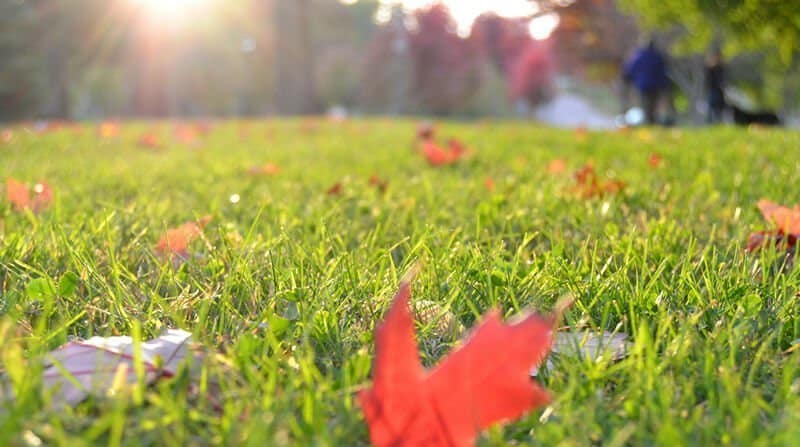
Lawn top dressing is a simple procedure but you should do it;
- At the right time of year.
- As part of your lawn care regime.
The Best Time of Year
Well, it’s best to top dress your lawn when conditions for grass growth are at their best. This means, plenty of sun, rain and warmth. You want to avoid excess heat and cold and the majority of the years weed seeds.
This makes spring and autumn the best times of year for top dressing.
As Part of Your Lawn Care Regime
It’s also in autumn that you’d typically, rake, scarify and aerate your lawn.
Normally you’d overseed and fertilise your lawn after these kinds of treatments to help it recover as quickly as possible.
Top dressing is best done after raking/scarification and aeration but before overseeding and fertilising. So you might plan to do all of this in a day and the process would look something like this.
- Rake/scarify – to remove moss and/or thatch.
- Hollow-tine aeration – to relieve compaction.
- Top dress – to even out the lawn surface, work new soil into existing soil and provide good soil contact for new grass seed.
- Overseed – to grow new grass and help the lawn recover.
- Fertilise – to give the new grass seed the nutrients it needs to germinate and grow quickly.
The Tools You’ll Need For Top Dressing a Lawn
Here is a list of all the tools you need for lawn dressing;
Lawnmower
Before top-dressing, you’ll need to cut the grass fairly close. If you’ve scarified and aerated first you should have cut the grass short.
If not, make sure the grass is short first.
Read: Lawn Mower Buying Guide – Choosing the Right Type
 Top Dressing Topsoil
Top Dressing Topsoil
You can’t top dress a lawn without soil so choose a topsoil that is similar to your current soil or one that will improve it. Both in terms of soil profile and pH.
Remember, if you’ve got heavy clay soil, choose a sandy loam mix. If it’s sandy, use a loam mix.
A Bucket or Wheelbarrow
You can buy top dressing soil in 25kg bags which, although heavy, can be carried and emptied onto your lawn.
If they’re too heavy, or if you order your soil to come in a bulk bag, you’ll need a way of dispersing it. In which case, use a bucket, or even better, a wheelbarrow.
 Large Landscaping Rake
Large Landscaping Rake
You’ll need to work the top dressing into the lawn and fill any small undulations and the holes created by hollow-tining.
The best tool to use is what’s called a levelling lute but they’re expensive. So I suggest you invest in a large landscaping rake with a flat back.
This will help work the new soil evenly into your lawn.
 A Stiff Brush
A Stiff Brush
There’s only so much you can do with the back of a rake. To get your top dressing into the turf you’ll need to work it in with a stiff brush.
 Grass Seed
Grass Seed
Once you’ve spread your top dressing, get some grass seed down. This will create a thicker, lusher and healthier lawn.
The new soil will create the perfect environment for new grass seed to germinate and grow.
There are many different types of grass seed available so…
Read: What is the Best Grass Seed? My Top Choices
 Fertiliser
Fertiliser
To help the new grass seed to germinate, apply a fertiliser.
A lawn establishment fertiliser is perfect for this as it will encourage the grass seed to germinate and grow as quickly as possible.
Read: What is the Best Lawn Fertiliser? My 6 Top Recommendations
 Hose and Sprinkler
Hose and Sprinkler
In order to activate the fertiliser and to encourage germination, you need to keep the soil moist.
A hose and sprinkler system is best, preferably one with a fine spray setting. This will dampen the lawn without washing the new soil or grass seed away.
Read: What’s the Best Garden Hose? 6 Products Tested and Reviewed
How to Calculate How Much Top Dressing Soil You’ll Need
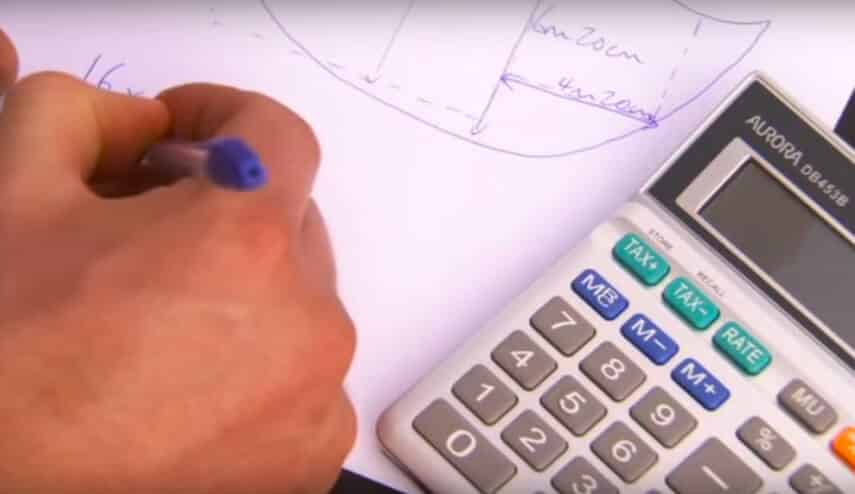
Calculating the amount of material you need for top dressing your lawn is simple enough to do.
First, you need to understand how much topsoil to put down.
Family or Utility Lawns
For a normal family or utility lawn, you want to try and keep it to around 5mm deep. Any low spots will naturally get more but it’s really important that you don’t smother the grass.
A good rule of thumb is to keep at least 75% of the grass leaf exposed, otherwise, you risk killing it.
If your lawn is full of peaks and troughs you might find that this doesn’t level it completely the first time around. In this case, you’ll need to top dress more than once over the course of a few seasons.
If you only add 5mm of topsoil at a time you should be able to top dress twice in the spring and once in the autumn. At this point, your lawn should be much more level and full of nutrients.
5mm in topsoil equates to 4-5kg per square meter of lawn. To work out how much topsoil you need, simply multiply your lawns square meterage by the weight in soil per square meter.
So let’s say your lawn is 50 square meters.
50 (square meterage of your lawn) x 5 (kilos per square meter) = 250kg.
Ornamental Lawns
For ornamental lawns, top dressing should be part of your lawn care program. In which case stick to just 1kg per square meter.
This is called ‘trickle dressing’ and works into the lawn better, improves the decomposition of lawn thatch and is much less noticeable on fine lawns.
Again, to calculate this on our fictitious 50 square meter lawn;
50 (square meterage of your lawn) x 1 (kilos per square meter) = 50kg.
How to Top Dress Your Lawn, Step-by-Step
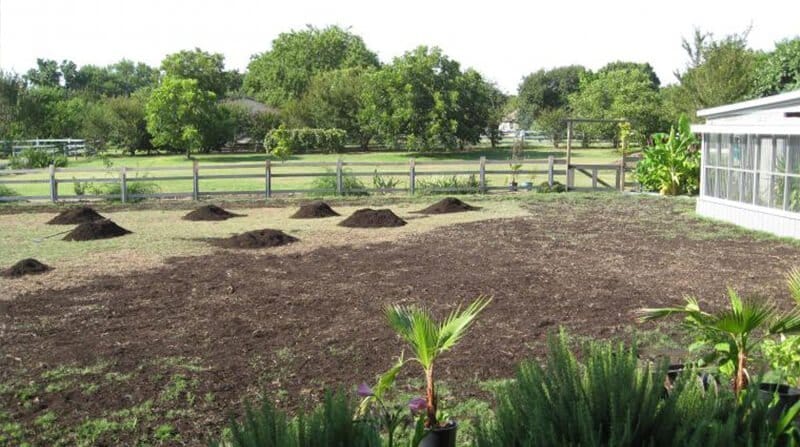
Lawn top dressing is a very simple procedure. That said, it can take a bit of time.
Step 1: Pile Up Small Mounds of Topsoil Evenly Over Your Lawn
Take your bags of topsoil or put it in a bucket or wheelbarrow and make several piles of it all over your lawn.
Space them out a few feet apart.
Step 2: Spread the Piles of Topsoil Out With the Back of a Rake
Now you’ve got little piles of soil everywhere, take your landscaping rake and turn it over so you’re using the back of it instead of the tines.
Move the soil around and work it into the lawn. You need to make sure that at least 75% of the grass leaf is poking through the soil.
Spread the soil out as evenly as you can. Your lawn will be pretty black at this point.
Step 3: Work the Soil into the Lawn With a Stiff Brush
There’s only so much you can do with the back of a rake so now you need to really work the soil into the turf.
Take a stiff yard brush and brush the topsoil into the turf.
Step 4: Water the Lawn
The only thing left to do now is water the lawn.
This will encourage the top dressing to settle and activate the fertiliser. Use a sprinkler with a fine spray setting. You want to wet the lawn, not wash the new soil and grass seed away.
Read: Lawn Watering: Why, When and How to Water Grass
In Conclusion
So that’s all there is to know about lawn top dressing.
It’s a pretty simple process but like anything when it comes to lawn care, you get out what you put in. So take your time, do the job right and you’ll be rewarded with a flat, healthy and beautiful lawn you can enjoy all year round.
Now it’s Over to You
Are you planning to top dress your lawn? Do you have experience of doing it? Do you have any questions?
If so, I’d love to hear from you in the comment section. Leave a comment and I’ll jump in a reply.
I’d also love to see any before and after or progress pictures. Send them in and I’ll share them with the community.
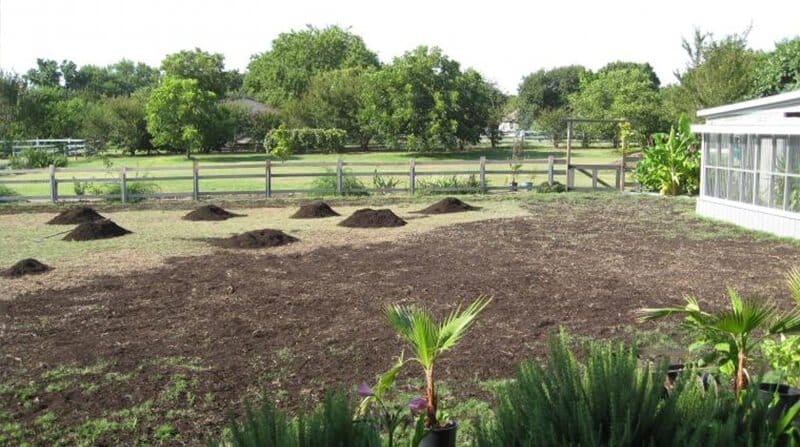

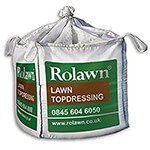 Top Dressing Topsoil
Top Dressing Topsoil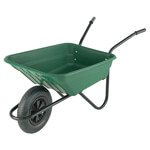
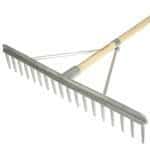 Large Landscaping Rake
Large Landscaping Rake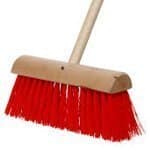 A Stiff Brush
A Stiff Brush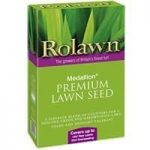 Grass Seed
Grass Seed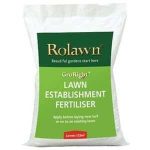 Fertiliser
Fertiliser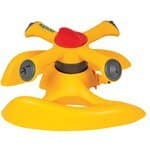 Hose and Sprinkler
Hose and Sprinkler
Hi,
I plan to do the top dressing procedure in a couple of weeks time. I was going to scatter the grass seed and then rake in the top dressing on top, the theory being that the seed is covered and will discourage birds. You indicate topdressing first and then seed. Would it matter which way i did it??
Would be most grateful for your advice.
Many thanks
Tom